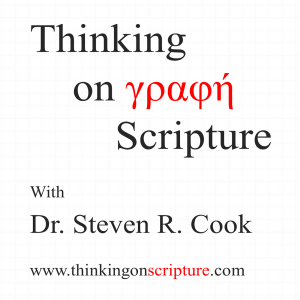
Wednesday Jul 14, 2021
The Gospel Explained
The gospel is the solution to a problem (see video presentation). It’s the good news that follows the bad news. There are two parts to the problem. First, God is holy (Psa 99:9; Isa 6:3; Rev 15:4), which means He is positively righteous and separate from all that is evil. Being holy, God can have nothing to do with sin except to condemn it (Hab 1:13; 1 John 1:5). Second, all mankind is sinful and separated from God (Rom 3:10, 23). We are sinners in Adam (Rom 5:12; 1 Cor 15:21-22), sinners by nature (Rom 7:14-25; 13:12-14), and sinners by choice (Isa 59:2; Jam 1:14-15). Some who experienced God’s holiness automatically saw their sinfulness (Isa 6:5; Luke 5:8). To further complicate the problem, we are helpless to solve the sin problem and save ourselves (Rom 5:6-10; Eph 2:1-3). Good works have no saving merit before God (Isa 64:6; Rom 4:1-5; Gal 2:16, 21; Eph 2:8-9; Tit 3:5; cf. Phil 3:4-9). We cannot save ourselves any more than we can jump across the Grand Canyon or throw rocks and hit the moon. But God, because of His mercy and love toward us (John 3:16; Eph 2:3-7), did for us what we cannot do for ourselves. He provided a solution to the problem of sin, and that solution is the cross of Christ (1 Cor 1:18). God the Son—the second Person of the Trinity—came into the world by human birth (Luke 1:26-35; John 1:1, 14), lived a perfectly righteous life (Matt 5:17-21), and willingly died in our place and bore the punishment for our sins. Jesus solved both problems: 1) He lived the righteous life that God demands and committed no sin (2 Cor 5:21; Heb 4:15; 1 John 3:5), and 2) He died for us on the cross and paid the penalty for all our sins (Isa 53:1-12; Mark 10:45; Rom 5:6-10; 1 John 2:2). Peter informs us that Jesus died in our place, “the just for the unjust, that He might bring us to God” (1 Pet 3:18). The cross is God’s righteous solution to the problem of sin, as well as His greatest display of love toward sinners. At the cross, God judged our sin as His righteousness required, and pardons the sinner as His love desires. To understand the cross of Christ is to understand the heart of God toward a fallen world He wants to save.
Scripture reveals that after Jesus went to the cross and died for our sins, He was buried, and raised again on the third day (Matt 16:21; 17:22-23; Luke 24:6-7; Acts 10:38-41; 1 Cor 15:3-4). After His resurrection, Jesus appeared to numerous persons over a period of forty days, namely, Mary Magdalene and other women (Matt 28:1-10; John 20:10-18), two disciples on the road to Emmaus (Luke 24:13-32), the disciples without Thomas (John 20:19-25), the disciples with Thomas (John 20:26-29), the disciples by the Sea of Galilee (John 21:1-23), Peter, James, and more than 500 brethren at one time (1 Cor 15:5-7), the apostle Paul (1 Cor 15:8), and lastly, to the disciples at the Mount of Olives (Acts 1:9-12). Jesus’ resurrection means He conquered sin and death and will never die again (Rom 6:9).
In order for us to be reconciled to God, we must simply trust in Jesus as our Savior (John 3:16; 20:30-31; Acts 4:12; 16:30-31). The gospel message is that “Christ died for our sins according to the Scriptures, and that He was buried, and that He was raised on the third day according to the Scriptures” (1 Cor 15:3-4). When we trust in Christ as our Savior, we are forgiven all our sins (Eph 1:7; Col 1:14), given eternal life (John 3:16; 10:27-28), and receive the righteousness of God as a free gift (Rom 5:17; 2 Cor 5:21; Phil 3:9).
No comments yet. Be the first to say something!